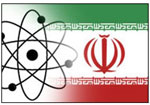 Arab News: Last Tuesday, April 9, a massive earthquake hit southern Iran, next to the Bushehr nuclear power plant. The earthquake has heightened concerns about possible damage to this nuclear reactor, with possible devastation throughout Iran and the Gulf. Arab News
Arab News: Last Tuesday, April 9, a massive earthquake hit southern Iran, next to the Bushehr nuclear power plant. The earthquake has heightened concerns about possible damage to this nuclear reactor, with possible devastation throughout Iran and the Gulf. Arab News
Abdel Aziz Aluwaisheg
 Last Tuesday, April 9, a massive earthquake hit southern Iran, next to the Bushehr nuclear power plant. The earthquake has heightened concerns about possible damage to this nuclear reactor, with possible devastation throughout Iran and the Gulf. A nuclear accident at the reactor could spread destruction to all surrounding areas, contaminating the air and drinking water of most GCC countries.
Last Tuesday, April 9, a massive earthquake hit southern Iran, next to the Bushehr nuclear power plant. The earthquake has heightened concerns about possible damage to this nuclear reactor, with possible devastation throughout Iran and the Gulf. A nuclear accident at the reactor could spread destruction to all surrounding areas, contaminating the air and drinking water of most GCC countries.
The epicenter of the first tremor, measuring 6.3 on the Richter scale, was located just 85 km from the Bushehr reactor. It has been followed by numerous aftershocks, which are still continuing as I write this piece. According to Iranian Red Crescent officials quoted by the official news agency, about one hundred villages have been affected by the earthquake and close to a thousand homes damaged as a result.
Iranian officials have tried to calm fears that the earthquake could affect the nuclear reactor. However, their words were far from reassuring, especially as the aftershocks continued, getting ever closer to the plant. The whole area of the reactor is prone to earthquakes, as it sits on a major fault line. Many devastating earthquakes have taken place in this vicinity over the years, with devastating results.
The location of the Bushehr facility, in an earthquake-prone area, is disconcerting. Last Tuesday’s earthquake epicenter was just 85 km away, but some of the aftershocks were even closer. The effects of the earthquake were felt throughout Iran the Gulf, but more noticeably in the vicinity of the Bushehr facility.
In 2011, the New York-based Natural Resources Defense Council evaluated the seismic hazard to reactors worldwide, as determined by the Global Seismic Hazard Assessment Program data, placing Busheher nuclear reactor among the highest seismic hazard areas.
In addition to its location, the age of the Bushehr reactor, its checkered history, the technology it uses, and the competence level of its operators, are all contributing factors to the unease felt worldwide about this facility, which started operating in September 2011.
Despite those facts, Iranian officials have defiantly said since Tuesday’s earthquake that they intended to build two additional reactors in the Bushehr facility, together with 16 other reactors in different parts of the country.
What has been equally disturbing is the cavalier attitude of Iranian officials following the earthquake, dismissing concerns without providing tangible evidence to the contrary. At the same time, they have not changed their position regarding unfettered international inspection of their nuclear facilities. Nor are there convincing indications that Iran has contingency plans in case of nuclear accidents at this facility.
Iranian recent posturing was reminiscent of their attitudes last year after the news came out about a malfunction in the Bushehr reactor. The lack of concern by Iranian officials combined with Iran’s reluctance to open up its nuclear facilities to international inspections, heightening concerns in the GCC and elsewhere about safety at the reactor.
Concerns about possible nuclear fallout are highest in the GCC countries, because of the close proximity of the Bushehr facility to GCC capitals and major population centers. In fact, Bushehr is much closer to those capitals than it is to Tehran, the Iranian capital, located some 1,300 km to the north. By contrast, Bushehr is just around 250 km across the Northern Gulf from Kuwait City and only 200 km of the city of Khafji in Saudi Arabia on the west coast of the Gulf. Bushehr is only about 300 km from Dammam, Alkhobar, Dharan, Bahrain and Doha. It is about 400 km from Abu Dhabi, Dubai and other UAE cities. Bushehr is closer to Riyadh, Saudi Arabia’s capital, and to theSultanate of Oman than it is to the Iranian capital.
As we saw in previous major nuclear accidents, in the Ukraine and Japan, devastation can be swift, massive and long lasting. Toxic nuclear effects can be carried by wind and water hundreds of miles away, wreaking havoc everywhere they reach. In many respects, those effects can be irreversible.
In addition to air pollution, a nuclear accident in Bushehr would immediately contaminate the Gulf waters, which are the main source of drinking water, as most GCC countries rely on water from the Gulf for desalination.
Given the high stakes of nuclear safety in Iran’s nuclear facilities, Iran should be more forthcoming in allowing international inspection of Bushehr, to reassure its own citizens and neighbors about the safety of the plant.


